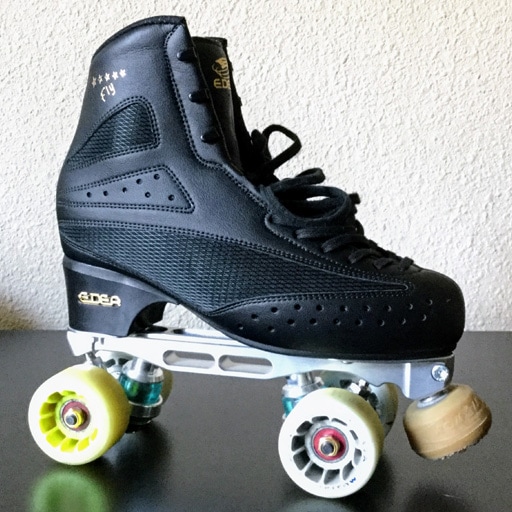Exercise 1 – Standing on one foot
We don’t practice or understand balance enough with life, and then we take the crazy notion and strap some wheels to our feet and tell ourselves to go do stuff. This very reason is why many have trouble learning how to roller skate or ice skate. In this first section, we will give you some exercises I’ve done to help improve my balance. To understand balance, you must first learn and understand how to stand on one foot. So pick one and let’s go.
It doesn’t matter if you start with your left or right foot. Start with your feet shoulder width apart. Now to stand on one foot, you first need to shift your weight to the shoulder of the same side foot that you intend to stand on. The left foot equals the left shoulder and the right foot equals the right shoulder. Now when you shift your weight to the side, you plan to stand on, don’t just lean over at the waist! Make sure your shoulder and hips move over to the side you intend to stand on. The shoulder and body should move as one solid unit! This will be true of any weight shifting from here out. Focus all of your mind, balance, and weight on your shoulder of the employed side extending down the arm and to the hand. All of your tension should be on that side of the body that you are standing on, extending through the arm, down to the hand. You should notice how stable and still you become. You should have very little wobble or movement in your ankles. Everything should be quiet and still. Another thing I’ve learned is to fix your sight on an object. Object fixation will help give us a reference to how we are interacting with the environment, so we can adjust our balance accordingly. Here, object fixation can be a good thing, but we will talk about it later when it can be a bad thing. To prove how object fixation is a good thing for balance, repeat the exercise standing on one foot, but this time close your eyes. You’ll notice that you’ll have a harder time keeping your balance, and you will use your ankles a lot more to stabilize your balance. Now to further experiment move your free arm and free leg anywhere you would like but maintain your focus on the control side, which is your shoulder extending down to your hand. You should probably notice that you can move your free arm or your free leg almost anywhere without losing your balance easily, as long as you maintain the focus on the control shoulder on the employed side. Switch feet and try the other side.
